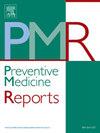Association between dietary niacin intake and the odds of gallstones in US adults: A cross-sectional study in NHANES 2017–2020
IF 2.4
3区 医学
Q2 PUBLIC, ENVIRONMENTAL & OCCUPATIONAL HEALTH
引用次数: 0
Abstract
Objective
To investigate the association between dietary niacin intake and the risk of gallstones in American adults using data from the National Health and Nutrition Examination Survey (NHANES) from 2017 to 2020.
Methods
This cross-sectional study analyzed data from 8191 participants aged 18 years and older. Dietary niacin intake was assessed using two 24-h dietary recalls. The presence of gallstones was identified through a questionnaire. Logistic regression models were used to estimate odds ratios (ORs) and 95 % confidence intervals (CIs) for gallstones across quartiles of niacin intake, adjusting for demographic and health-related covariates.
Results
Participants with higher niacin intake showed a significantly lower risk of gallstones. After adjusting for a wide range of covariates, individuals in the highest quartile of niacin intake had a 49 % reduced risk of gallstones compared to those in the lowest quartile (OR = 0.51, 95 % CI: 0.34, 0.76).
Conclusion
Higher dietary niacin intake is associated with a reduced risk of gallstones in US adults. These findings suggest that increasing niacin intake could be a viable strategy for the prevention of gallstones. Future longitudinal studies are needed to confirm these results and explore the underlying mechanisms.
膳食烟酸摄入量与美国成年人胆结石发病率之间的关系:NHANES 2017-2020的一项横断面研究
目的利用 2017 年至 2020 年美国国家健康与营养调查(NHANES)的数据,研究美国成年人膳食烟酸摄入量与胆结石风险之间的关系。方法这项横断面研究分析了 8191 名 18 岁及以上参与者的数据。膳食烟酸摄入量通过两次 24 小时膳食回顾进行评估。通过问卷调查确定是否患有胆结石。采用逻辑回归模型估算了不同烟酸摄入量四分位数人群患胆结石的几率比(ORs)和95%置信区间(CIs),并对人口统计学和健康相关协变量进行了调整。在对各种协变量进行调整后,烟酸摄入量最高四分位数的人与最低四分位数的人相比,患胆结石的风险降低了 49%(OR = 0.51,95 % CI:0.34, 0.76)。这些研究结果表明,增加烟酸摄入量是预防胆结石的可行策略。今后还需要进行纵向研究,以证实这些结果并探索其潜在机制。
本文章由计算机程序翻译,如有差异,请以英文原文为准。
求助全文
约1分钟内获得全文
求助全文
来源期刊

Preventive Medicine Reports
Medicine-Public Health, Environmental and Occupational Health
CiteScore
3.90
自引率
0.00%
发文量
353
 求助内容:
求助内容: 应助结果提醒方式:
应助结果提醒方式:


